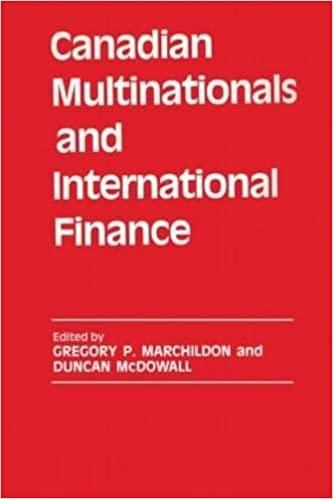Question
Only #3 is what I need help (Please show excel formula and calculation) Scenario: Painted Company must decide whether to invest $100 million in developing
Only #3 is what I need help (Please show excel formula and calculation)
Scenario: Painted Company must decide whether to invest $100 million in developing and implementing a new enterprise system in the face of considerable technological and market (demand for product and market share) uncertainty. The firm's cost of capital is 10%.
1. Evaluate Using Conventional NPV Analysis There can be a good and bad result for this investment.
The probability of a successful project (or pilot) is now 70% and the probability of an unsuccessful project is 30%.
Good Result: The Free Cash flow perpetuity (Annual Benefits) in the good case is $15 million per year
Bad Result: The system proves to be more difficult to implement and improvements in management of the supply chain are less. In addition, the growth in market demand for the product is lower. The Free Cash flow perpetuity (Annual Benefits) in the "bad" case is now $1.5 million per year, not $2 million.
Given: Year 0 (now) cash flows: $-100 million for ERP purchase and implementation.
Using traditional "all or nothing" NPV analysis, calculate the expected NPV of the project. Decide if you will invest.
The cost of capital is (0.1). Use this to calculate the PV of the good perpetuity and the PV of the bad perpetuity. Then calculate the good NPV and the bad NPV. Finally calculate the Expected NPV and decide if you will invest.
2. Evaluate using the Real Options Approach (all cash flows are after tax). The real options alternative allows for flexibility and the delay of the investment for 1 year. In this case, if we do a pilot project we will be better able to evaluate ERP implementation complexities, achievable supply chain benefits, and the market share our products will achieve. However, the cost of the project will rise to $110 Million ($10 Million this year and $100 Million next year) with the one-year delay and additionally management decides to purchase and implement the financial module in year 1 at a cost of $10 Million (real option).
The results are slightly different:
Year 0 (now) cash flows: $10 million for the pilot project.
After year 1, if the conditions indicate a good result, the firm will invest the $100 million for the ERP with expected benefits (cash flows) of $15 million annually (forever) beginning in year 2. Benefits in year one from the financial module are $1 million.
If a bad result is indicated, the firm makes no further investments beyond the financial module, which yield annual benefits of $.5 million in year 1 and each year thereafter (forever).
Here the firm has flexibility and has exercised its option to make no further investments based on better information and knowledge of expected future benefits.
Evaluate the expected NPV of this project using the described real option.
Consider that we have the opportunity to do a pilot program by installing the financial model only at a cost of $10 MM. A year from now, we can decide whether to invest in the full plant or not. Analyze this case as follows: Find the good case NPV and the bad case NPV. Obviously, we won't exercise the option if we discover that we're in the Bad Case. So, we limit our loss to $10 MM less the present value of the bad case starting in Year 1.
3. Comparison: Critical Probabilities What is the expected NPV in each case? Compare the expected NPV using the traditional NPV approach with the expected NPV using real options. What do you recommend? Why? What do you conclude in each case?
If you don't know the probability of success for the pilot, is there a value that is critical to your recommendation? Is there a probability of success above or below which you will recommend undertaking the pilot and below or above which you will recommend a go/ no go decision on the underlying project without undertaking a pilot test?
Breakeven Probability: If we knew the probability of the full project's success to be 1.0 (i.e., a guaranteed success), we wouldn't go the pilot project route -- why waste $10 million? Therefore, there must be a breakeven probability of success that would render the pilot project irrelevant. We can find that probability by equating the present values of the full project and the pilot.
Critical Probability of Success with the Pilot: We can calculate the critical probability for going ahead with the pilot by setting the PV expression = 0 and solving for X.
Go / No Go Probability. Probability of Success without Pilot: If we have no real option, the breakeven probability for go/ no go comes from solving another similar equation. (You must find it.)
Provide answers to the following: a. Probability to forget the Pilot and complete the Project. b. Probability of going ahead with the Pilot. c. Should it Go or No Go Probability.
Step by Step Solution
There are 3 Steps involved in it
Step: 1

Get Instant Access to Expert-Tailored Solutions
See step-by-step solutions with expert insights and AI powered tools for academic success
Step: 2

Step: 3

Ace Your Homework with AI
Get the answers you need in no time with our AI-driven, step-by-step assistance
Get Started


